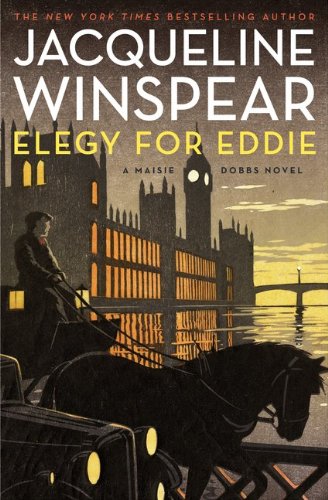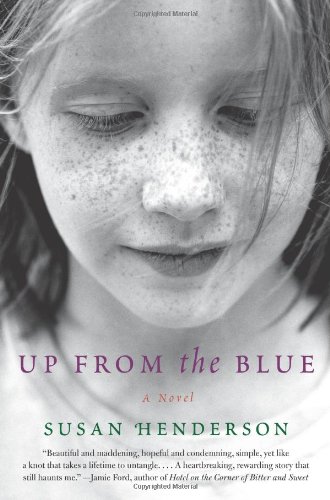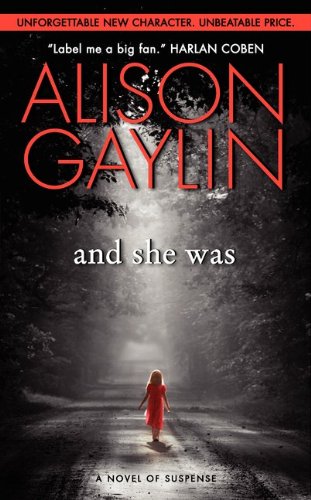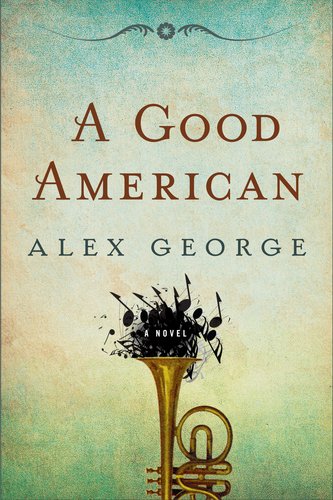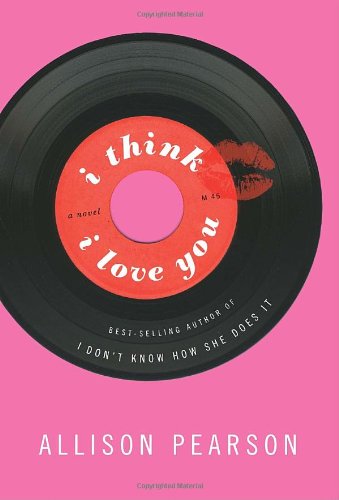Book description:
Early April 1933. To the costermongers of Covent Garden—sellers of fruit and vegetables on the streets of London—Eddie Pettit was a gentle soul with a near-magical gift for working with horses. When Eddie is killed in a violent accident, the grieving costers are deeply skeptical about the cause of his death. Who would want to kill Eddie—and why?
Maisie Dobbs' father, Frankie, had been a costermonger, so she had known the men since childhood. She remembers Eddie fondly and is determined to offer her help. But it soon becomes clear that powerful political and financial forces are equally determined to prevent her from learning the truth behind Eddie's death. Plunging into the investigation, Maisie begins her search for answers on the working-class streets of Lambeth where Eddie had lived and where she had grown up. The inquiry quickly leads her to a callous press baron; a has-been politician named Winston Churchill, lingering in the hinterlands of power; and, most surprisingly, to Douglas Partridge, the husband of her dearest friend, Priscilla. As Maisie uncovers lies and manipulation on a national scale, she must decide whether to risk it all to see justice done.
In this latest installment in the series, Maisie is hired by the costermongers of her childhood to investigate the death of one of their own. What seems like a simple task eventually reveals a conspiracy involving the highest levels of society. While the mystery itself is not that complicated, the appeal of this books lies in Maisie's efforts to reconcile the girl she was with the woman she has become. She wrestles with questions of morality and independence, juggling the expectations of others with her dreams for herself. I enjoy watching her struggle to deal with her new-found affluence, attempting to help those in her life that are less fortunate without creating resentment or hostility.
This series is a masterful look at England in the post-WWI years, and has given me a much better perspective on the war-weariness that made so many willing to turn a blind eye to the dangers of the rise of the Nazi party in Germany. Following as they do the struggles of women in this period, these books highlight the sad realities of a generation of women faced with a shortage of men to marry and forced to make their own way in a world not yet ready to accept that necessity.
Sunday, February 19, 2012
Saturday, February 18, 2012
Up From the Blue by Susan Henderson
Book description:
Tillie Harris's life is in disarray—her husband is away on business, the boxes in her new home aren't unpacked, and the telephone isn't even connected yet. Though she's not due for another month, sudden labor pains force Tillie to reach out to her estranged father for help, a choice that means facing the painful memories she's been running from since she was a little girl.
Though this book opens with Tillie in labor in 1991, the vast majority of the story takes place in 1975, the year Tillie turned eight and the year her mother was consumed by depression. Tillie doesn't understand the trouble her mother is having though the reader will easily recognize the signs; Tillie just wants her family to be happy. With a dad in the military focused on the development of smart bombs, and a mom who doesn't get out of bed for days on end, Tillie and her brother Phil are left to fend for themselves often enough for the neighbors on base to have concerns.
When the family moves to DC so Tillie's father can work at the Pentagon, Tillie stays behind for two weeks before rejoining a family that no longer includes her mother. As Tillie wrestles with making friends and a new school, her father refuses to discuss her mother and remakes their home into a sterile military barracks with chores and schedules designed to remove chaos from their lives. The story has some surprising twists but ultimately the ending seems inevitable.
I found this book a powerful read- I picked it up just to read a few pages over lunch and found myself unable to put it down. Tillie's story is heartbreaking and you can feel her pain as she fumbles through a life where everything she knows seems somehow wrong. 1975 marked the end of innocence for Tillie and Phil, and scarred their entire lives. I also came to feel back for Tillie's father, a man clearly out of his depth who tried (and failed) to keep his family intact in the face of mental illness. Well-written and emotionally gripping, this book is a must read.
Tillie Harris's life is in disarray—her husband is away on business, the boxes in her new home aren't unpacked, and the telephone isn't even connected yet. Though she's not due for another month, sudden labor pains force Tillie to reach out to her estranged father for help, a choice that means facing the painful memories she's been running from since she was a little girl.
Though this book opens with Tillie in labor in 1991, the vast majority of the story takes place in 1975, the year Tillie turned eight and the year her mother was consumed by depression. Tillie doesn't understand the trouble her mother is having though the reader will easily recognize the signs; Tillie just wants her family to be happy. With a dad in the military focused on the development of smart bombs, and a mom who doesn't get out of bed for days on end, Tillie and her brother Phil are left to fend for themselves often enough for the neighbors on base to have concerns.
When the family moves to DC so Tillie's father can work at the Pentagon, Tillie stays behind for two weeks before rejoining a family that no longer includes her mother. As Tillie wrestles with making friends and a new school, her father refuses to discuss her mother and remakes their home into a sterile military barracks with chores and schedules designed to remove chaos from their lives. The story has some surprising twists but ultimately the ending seems inevitable.
I found this book a powerful read- I picked it up just to read a few pages over lunch and found myself unable to put it down. Tillie's story is heartbreaking and you can feel her pain as she fumbles through a life where everything she knows seems somehow wrong. 1975 marked the end of innocence for Tillie and Phil, and scarred their entire lives. I also came to feel back for Tillie's father, a man clearly out of his depth who tried (and failed) to keep his family intact in the face of mental illness. Well-written and emotionally gripping, this book is a must read.
Monday, February 13, 2012
And She Was by Allison Gaylin
Book description:
On a summer afternoon in 1998, six-year-old Iris Neff walked away from a barbecue in her small suburban town . . . and vanished.
Missing persons investigator Brenna Spector has a rare neurological disorder that enables her to recall every detail of every day of her life. A blessing and a curse, it began in childhood, when her older sister stepped into a strange car never to be seen again, and it’s proven invaluable in her work. But it hasn’t helped her solve the mystery that haunts her above all others—and it didn’t lead her to little Iris. When a local woman, Carol Wentz, disappears eleven years later, Brenna uncovers bizarre connections between the missing woman, the long-gone little girl . . . and herself.
With a main character who has a bizarre medical condition that is both a blessing and a curse- Brenna can remember any situation, any moment in time, but she can be thrown into those memories involuntarily by a smell or a snippet of conversation that acts as a trigger. She has been this way ever since her older sister got into a car one day and disappeared. Now Brenna searches for other lost people, hoping all the time to somehow unlock the key to finding her sister.
The story here revolves around another missing child and a recent murder that seems linked to that long ago disappearance. The plot is tight, the writing wonderful, and the end a complete surprise. Brenna's family story and her interactions with others make her an incredibly engaging character. In combination with the strength of the underlying plot, this book is certainly a must-read for any fan of mysteries and thrillers.
Highly recommended.
On a summer afternoon in 1998, six-year-old Iris Neff walked away from a barbecue in her small suburban town . . . and vanished.
Missing persons investigator Brenna Spector has a rare neurological disorder that enables her to recall every detail of every day of her life. A blessing and a curse, it began in childhood, when her older sister stepped into a strange car never to be seen again, and it’s proven invaluable in her work. But it hasn’t helped her solve the mystery that haunts her above all others—and it didn’t lead her to little Iris. When a local woman, Carol Wentz, disappears eleven years later, Brenna uncovers bizarre connections between the missing woman, the long-gone little girl . . . and herself.
With a main character who has a bizarre medical condition that is both a blessing and a curse- Brenna can remember any situation, any moment in time, but she can be thrown into those memories involuntarily by a smell or a snippet of conversation that acts as a trigger. She has been this way ever since her older sister got into a car one day and disappeared. Now Brenna searches for other lost people, hoping all the time to somehow unlock the key to finding her sister.
The story here revolves around another missing child and a recent murder that seems linked to that long ago disappearance. The plot is tight, the writing wonderful, and the end a complete surprise. Brenna's family story and her interactions with others make her an incredibly engaging character. In combination with the strength of the underlying plot, this book is certainly a must-read for any fan of mysteries and thrillers.
Highly recommended.
Sunday, February 12, 2012
The Good American by Alex George
Book description:
It is 1904. When Frederick and Jette must flee her disapproving mother, where better to go than America, the land of the new? Originally set to board a boat to New York, at the last minute, they take one destined for New Orleans instead ("What's the difference? They're both new"), and later find themselves, more by chance than by design, in the small town of Beatrice, Missouri. Not speaking a word of English, they embark on their new life together.
Beatrice is populated with unforgettable characters: a jazz trumpeter from the Big Easy who cooks a mean gumbo, a teenage boy trapped in the body of a giant, a pretty schoolteacher who helps the young men in town learn about a lot more than just music, a minister who believes he has witnessed the Second Coming of Christ, and a malevolent, bicycle-riding dwarf.
A Good American is narrated by Frederick and Jette's grandson, James, who, in telling his ancestors' story, comes to realize he doesn't know his own story at all. From bare-knuckle prizefighting and Prohibition to sweet barbershop harmonies, the Kennedy assassination, and beyond, James's family is caught up in the sweep of history. Each new generation discovers afresh what it means to be an American. And, in the process, Frederick and Jette's progeny sometimes discover more about themselves than they had bargained for.
This multi-generational immigrant story tells the complicated and enduring tale of one family's life and loves. After Frederick and Jette flee Hanover to start a new life, they end up in the small town of Beatrice, Missouri not because of any plan but rather because of a series of small choices that end up having a lasting impact. The story of their love, the family they create, and the subsequent generations is tied together by music; from opera to jazz to barbershop quartets, music is the constant thread that binds this family (and this story) together. The characters are real and leap off the page, and the writing has a quiet beauty that pulls you into this novel. There are times when I laughed, and times when I cried, but never a time when I wanted to put this book down.
It is 1904. When Frederick and Jette must flee her disapproving mother, where better to go than America, the land of the new? Originally set to board a boat to New York, at the last minute, they take one destined for New Orleans instead ("What's the difference? They're both new"), and later find themselves, more by chance than by design, in the small town of Beatrice, Missouri. Not speaking a word of English, they embark on their new life together.
Beatrice is populated with unforgettable characters: a jazz trumpeter from the Big Easy who cooks a mean gumbo, a teenage boy trapped in the body of a giant, a pretty schoolteacher who helps the young men in town learn about a lot more than just music, a minister who believes he has witnessed the Second Coming of Christ, and a malevolent, bicycle-riding dwarf.
A Good American is narrated by Frederick and Jette's grandson, James, who, in telling his ancestors' story, comes to realize he doesn't know his own story at all. From bare-knuckle prizefighting and Prohibition to sweet barbershop harmonies, the Kennedy assassination, and beyond, James's family is caught up in the sweep of history. Each new generation discovers afresh what it means to be an American. And, in the process, Frederick and Jette's progeny sometimes discover more about themselves than they had bargained for.
This multi-generational immigrant story tells the complicated and enduring tale of one family's life and loves. After Frederick and Jette flee Hanover to start a new life, they end up in the small town of Beatrice, Missouri not because of any plan but rather because of a series of small choices that end up having a lasting impact. The story of their love, the family they create, and the subsequent generations is tied together by music; from opera to jazz to barbershop quartets, music is the constant thread that binds this family (and this story) together. The characters are real and leap off the page, and the writing has a quiet beauty that pulls you into this novel. There are times when I laughed, and times when I cried, but never a time when I wanted to put this book down.
Friday, February 10, 2012
I Think I Love You by Allison Pearson
Book description: Wales, 1974. Petra and Sharon, two thirteen-year-old girls, are obsessed with David Cassidy. His fan magazine is their Bible, and some days his letters are the only things that keep them going as they struggle through the humiliating daily rituals of adolescence—confronting their bewildering new bodies, fighting with mothers who don’t understand them at all. Together they tackle the Ultimate David Cassidy Quiz, a contest whose winners will be flown to America to meet Cassidy in person.
London, 1998. Petra is pushing forty, on the brink of divorce, and fighting with her own thirteen-year-old daughter when she discovers a dusty letter in her mother’s closet declaring her the winner of the contest she and Sharon had labored over with such hope and determination. More than twenty years later, twenty pounds heavier, bruised by grief and the disappointments of middle age, Petra reunites with Sharon for an all-expenses-paid trip to Las Vegas to meet their teen idol at last, and finds her life utterly transformed.
I actually expected this novel to be lighter and fluffier than it was given the subject matter- the story of a teenage crush on David Cassidy doesn't sound like it's going to be particularly deep. Once I began reading though, it became clear that Petra had unexplored depths, and that her obsession with David Cassidy filled a deep void in her life. Petra's awkward attempts to maintain her place in her friend group while dealing with a disapproving yet beautiful foreign mother who told her she didn't look so bad is poignant and authentic. The revelations about where exactly all those facts about David Cassidy that Petra and her friends (and millions of other girls) collected like pearls was amusing and yet also sad; I was delighted that Bill worked his was back into the modern-day section of the story in the end.
Well-written, both funny and heartbreaking in places- this novel is a wonderful way to spend a weekend afternoon. Trust me- if you ever nurtured a deep and lasting love for any pop star, you will see at least a little bit of yourself in Petra and her friends.
London, 1998. Petra is pushing forty, on the brink of divorce, and fighting with her own thirteen-year-old daughter when she discovers a dusty letter in her mother’s closet declaring her the winner of the contest she and Sharon had labored over with such hope and determination. More than twenty years later, twenty pounds heavier, bruised by grief and the disappointments of middle age, Petra reunites with Sharon for an all-expenses-paid trip to Las Vegas to meet their teen idol at last, and finds her life utterly transformed.
I actually expected this novel to be lighter and fluffier than it was given the subject matter- the story of a teenage crush on David Cassidy doesn't sound like it's going to be particularly deep. Once I began reading though, it became clear that Petra had unexplored depths, and that her obsession with David Cassidy filled a deep void in her life. Petra's awkward attempts to maintain her place in her friend group while dealing with a disapproving yet beautiful foreign mother who told her she didn't look so bad is poignant and authentic. The revelations about where exactly all those facts about David Cassidy that Petra and her friends (and millions of other girls) collected like pearls was amusing and yet also sad; I was delighted that Bill worked his was back into the modern-day section of the story in the end.
Well-written, both funny and heartbreaking in places- this novel is a wonderful way to spend a weekend afternoon. Trust me- if you ever nurtured a deep and lasting love for any pop star, you will see at least a little bit of yourself in Petra and her friends.
Sunday, February 5, 2012
Come In and Cover Me by Gin Phillips
Book Description:
When Ren was only twelve years old, she lost her older brother, Scott, to a car crash. Since then, Scott has been a presence in her life, appearing as a snatch of song or a reflection in the moonlight. Now, twenty-five years later, her talent for connecting with the ghosts around her has made her especially sensitive as an archaeologist. More than just understanding the bare outline of how our ancestors lived, Ren is dedicated to re-creating lives and stories, to breathing life into those who occupied this world long before us. Now she is on the cusp of the most important discovery of her career, and it is ghosts who are guiding her way. But what do two long-dead Mimbres women have to tell Ren about herself? And what message do they have about her developing relationship with a fellow archaeologist, the first man to really know her since her brother's death?
I don't know how accurate the elements of the story that touch on the Mimbres pottery and archaeology are, but they certainly read as well-researched and quite interesting. Unfortunately, to me those were the most engaging parts of the book. I found Ren a diffcult character to relate to and never fell that engaged or involved with her as a person. Scott seemed two dimensional at best and there was certainly no reason I could see for the two of them to fall in love, if indeed what they had was love. The flashbacks to the lives of the Mimbres artists who haunt Ren and her dig sites were again more engaging than the lives of the supposed main characters which made this book something of a slog to get through.
When Ren was only twelve years old, she lost her older brother, Scott, to a car crash. Since then, Scott has been a presence in her life, appearing as a snatch of song or a reflection in the moonlight. Now, twenty-five years later, her talent for connecting with the ghosts around her has made her especially sensitive as an archaeologist. More than just understanding the bare outline of how our ancestors lived, Ren is dedicated to re-creating lives and stories, to breathing life into those who occupied this world long before us. Now she is on the cusp of the most important discovery of her career, and it is ghosts who are guiding her way. But what do two long-dead Mimbres women have to tell Ren about herself? And what message do they have about her developing relationship with a fellow archaeologist, the first man to really know her since her brother's death?
I don't know how accurate the elements of the story that touch on the Mimbres pottery and archaeology are, but they certainly read as well-researched and quite interesting. Unfortunately, to me those were the most engaging parts of the book. I found Ren a diffcult character to relate to and never fell that engaged or involved with her as a person. Scott seemed two dimensional at best and there was certainly no reason I could see for the two of them to fall in love, if indeed what they had was love. The flashbacks to the lives of the Mimbres artists who haunt Ren and her dig sites were again more engaging than the lives of the supposed main characters which made this book something of a slog to get through.
Subscribe to:
Comments (Atom)
